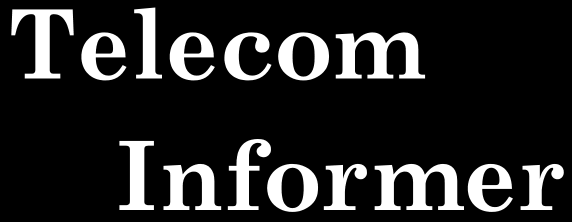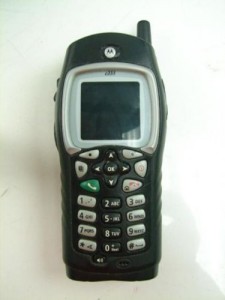Hello, and welcome to the Central Office! Spring has turned into summer once again, the most beautiful time of the year here in the Pacific Northwest. Bing Crosby once sang that the bluest skies he’d ever seen are in Seattle. On this gorgeous day, most of which I spent in the Westin Building working on a troublesome tandem trunk, this was certainly the case. Incidentally, I’m beginning to wonder if I’m the only technician left in the state who still knows how to fix anything, or if I’m just the only sucker who was willing to take the job.
The very concept of Skid Row was invented in Seattle. It ended near Pioneer Square, today the center of Seattle’s nightlife. So it’s probably appropriate that this is today’s setting for the ugliest gutter trash bastard child of telephony, the Motorola iDEN system. Visit Pioneer Square any weekend, and young twentysomethings living the Thug Life are everywhere, their Boost Mobile iDEN handsets chirping away in profound, meaningful dialogue: “YO CRACK DAWG WHERE U AT??? I LOOKIN’ FOR DA FEMALES!”
iDEN is a proprietary standard first commercially deployed in 1994 on the Nextel network. Nextel operates in 800-900MHz spectrum called “SMR,” which was originally intended for the purpose of taxi dispatch systems, construction radios, etc. To acquire its spectrum, Nextel literally went from city to city buying dispatch companies and similar businesses. In this manner, Nextel built the first nationwide mobile telephone network free of roaming charges. iDEN handsets look like cellular phones and quack like cellular phones, but legally they aren’t. They are trunked business radios with the ability to make phone calls.
When Sprint bought Nextel in 2005, the network was already suffering from capacity limitations. Additionally, the SMR spectrum on which Nextel operated was adjacent to numerous public safety frequencies. The iDEN network resulted in considerable interference to users of these frequencies, prompting numerous, urgent complaints to the FCC by public safety agencies. After protracted negotiations, Sprint agreed to vacate portions of the SMR spectrum (through a process called “rebanding”) in exchange for vast swaths of RF spectrum in the 900MHz and 1800MHz bands. This process was completed in the summer of 2008. The general consensus at the time was that Sprint made out like a bandit on the deal.
During rebanding, the Nextel network (which was already capacity constrained) began to experience serious problems with dropped calls, system busy messages, and incoming calls delivered straight to voicemail. Predictably, Nextel users began leaving Sprint in droves, on average more than one million customers per quarter. By early 2009, the dust had finally settled from rebanding mayhem—but there were hardly any Nextel customers left to care. It’s less clear now whether the spectrum swap deal was as good for Sprint as analysts initially assumed.
Meanwhile, Sprint had a largely moribund business to contend with, which was called Boost. While Nextel was still an independent company, they signed a wholesale Mobile Virtual Network Operator (MVNO) arrangement with Boost Mobile, a prepaid lifestyle brand focusing on young urban customers. The brand did very well under independent management, and quickly grew to become one of the largest MVNOs in the country. Shortly after the Sprint-Nextel merger, Sprint acquired the Boost brand and brought it in-house. And then they proceeded to do almost nothing with it.
However, in the second quarter of 2009, finding itself with plenty of spare unused iDEN capacity, Sprint launched the Boost Monthly Unlimited plan. This plan offers “all you can eat” access to voice, data, text, Picture Mail and walkie-talkie services. Literally everything is covered except for international usage, and at half the price of similar “unlimited” services. However, no roaming is available, making the service less expensive for Sprint to offer. This is because coverage on the iDEN network is limited to Nextel’s native footprint and roaming is only available (at extra cost) on a few select foreign carriers in North and South America.
Boost handsets have a telephone number, an IP address (assigned whether or not you subscribe to data service), and a “Walkie Talkie” number (used for trunked radio). Using the “Walkie Talkie” number, which is in the format 112*nxx*xxxxx, Boost handsets are capable of trunked radio communication with any Boost or Nextel handset (along with select foreign iDEN carriers). However, Boost does not offer a talk group feature, limiting the utility of this feature. The IP address is used by the mobile browser, but is always in the 10.x.x.x IP space (which is non-routable). There is also a PSTN telephone number, and like other mobile phone services, Boost is capable of sending and receiving SMS and MMS messages.
Telephone service on Boost has some unusual features and limitations for wireless carriers in general, but especially prepaid carriers. Voicemail is available, but it answers after just three rings—and this interval is, incredibly, neither configurable nor adjustable by Customer Service. Caller ID is available, but 3-way calling is not. Call Waiting is, strangely, only available for Monthly Unlimited plan subscribers. Although 3-way calling isn’t available, Boost iDEN supports an unusual feature allowing you to place the active call on hold (of course, billing while the call is on hold) so you can place another call in the background. You can then switch back and forth between calls, but you cannot join them. Another unusual feature allows you to configure your handset so it automatically answers after a specified number of rings. And Boost offers a rich and full featured call forwarding option, allowing you to forward calls to another number either immediately or after a specified pause. Like most prepaid wireless carriers, Boost offers international calling. However, users must contact Customer Service to have it specifically enabled, and many representatives do not know how to accomplish this. International calling rates are better than most prepaid carriers, although STi Mobile (a Sprint CDMA MVNO) offers better pricing overall.
Text messaging is also distinctive on Boost, and uses the MMS standard for backhaul. MMS is more commonly used for picture and video messaging on other carriers. This results in some incompatibilities, particularly with short codes. As of this writing, the 466453 (GOOGLE) short code has been enabled, but the 40404 (Twitter) short code does not work. Performance is also slower than with most other mobile carriers, because messages must be uploaded and downloaded via packet data (rather than by using spare capacity in the control channel, as is the case with MO-SMS on CDMA and SMS on GSM).
iDEN data runs at approximately 14.4Kbps peak, and is a 2G data service. The wIDEN 2.5G standard allows for 144Kbps peak. Sprint deployed wIDEN in major metropolitan areas between 2007 and 2008 and tested it for several months. Inexplicably, they cancelled the upgrade project in mid 2008 and disabled wIDEN. Although many handsets sold on the Nextel and Boost networks are wIDEN-capable, it appears that this project has been mothballed. Customers requiring high speed data services are steered to 1xEV-DO handsets on the CDMA network. As is the case with most data protocols, iDEN does not allow for simultaneous voice and data usage. While users can place outbound calls from within a data session, data transmission stops in the interim.
Although speeds are slow, Boost users with certain handsets (such as the i425) are able to achieve a tethered connection to a Windows laptop. This is surprisingly easy; one need only install the Motorola iDEN driver, connect the handset to the laptop using a USB cable, and then set up a dial-up connection with the telephone number S=#777 (leaving the username and password blank). Even on the least expensive prepaid rate plan, there is no billing for data usage; it is not necessary to have a data plan for this feature to work (an important distinction, because for all plans except Monthly Unlimited, data service costs 35 cents per day regardless of actual usage). While the experience is very low bandwidth, it is suitable for shell access and email.
For a brief period in mid-2008, Sprint launched a Boost product on the CDMA network. This was discontinued in early 2009. If you are still able to find a Boost CDMA handset, many users have reported that it is possible to activate it on an iDEN Boost plan (such as Monthly Unlimited), and it’s even possible to social engineer Boost customer service into performing an ESN change to a Sprint CDMA handset or PDA. Although coverage is limited to the native Sprint CDMA network, and no roaming is allowed, an iDEN plan on this network provides exceptional value (unlimited calls, SMS, and 1xEV-DO data service).
And with that, the time has come once more for me to go. I’m finished here at the Westin Building, and it’s time to put the finishing touches on the Toorcamp main stage! Incidentally, have you heard of Toorcamp? Come to the Pacific Northwest over the 4th of July weekend and be part of the first ever full scale hacker camp in North America. Based at a former nuclear missile silo, the organizers are planning a hacker extravaganza of art, music, cool hacks and fun projects. I’ll see you there!
REFERENCES
http://www.toorcamp.org – Toorcamp – North America’s first ever full-scale hacker camp! 4th of July weekend, 2009.
http://www.boostmobile.com – Boost Mobile official site
SHOUT-OUTS
- To Art Brothers and the great folks at the Beehive Telephone Company, thanks very much for your hospitality! I do hope to visit one of your solar powered Central Offices.
- To ThoughtPhreaker, it’s always phun seeing Portland phriends! Keep exploring, but stay out of trouble. 🙂

